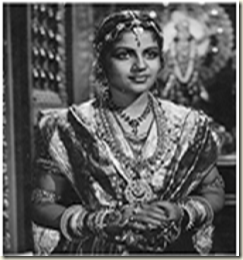An Irish-American, hailing from the state of Ohio, USA, Ellis Dungan's foray into Indian Cinema, in particular, Tamil movies was simply accidental. In the1930s during the colonial period and up to the1950s after India's independence, his association with the Tamil film industry was well-known. With innovative camera technical skill and excellent grasping of the story, delivery lines and the scenes to be shot, not only did he become a well sought-after cinematographer, but also made an indelible mark in the history of Indian cinema, in particular, Tamil film industry. His contribution to the Tamil Cinema was phenomenal, so to speak. Ellis Roderick Dungan (11 May 1909-1 December 2001) born in Barton, Ohio, USA studied film related subjects at the University of Southern California and upon
 |
| Director Ellis Dungan, movie. Ambikapathy(1937. www.frontline.in |
 |
| Ambikapathy, intimate love scene. dir Dungan. oddballfilms.blogspot.in |
graduation, he came over to India for job opportunities. At that time, the freedom struggle against the oppressive British rule was in full swing. In the 1930s and 1950s, there were countless Indian movies shot with more mythological subjects than social subjects, as in those days, people were fond of stories related to Indian mythology or history.
 |
| Dungan, Sadashivam and MSsubbalakshmi. hantekante.com |
 |
| Ellis Dungan, Tamil film director. oddballfilms.blogspot.in/ |
 |
| first film directed by Dungan. Sathi Leelavathi en.wikipedia.org |
T. S. Balaiya and comedian N. S. Krishnan. Providence gave him a chance to begin his career in India by directing the first ever Indian film, which happened to be Sathi Leelavathi (March 1935, written by S.S. Vasan (later he became a famous film producer and owner of Gemini Studios). This was the very first film of M.G. Ramachandran (he just did a small role) who was later destined to be a famous Tamil actor and first Chief Minister of Tamil Nadu state, from the film industry. MGR was the recipient of the highest Indian Government Award Bharat Ratna. It was Iru Sagodarargal (1936) that shot Dungan to fame as an effective movie director in the newly emerging Tamil film industry. MGR also acted in that old flick.
 |
| MSSubbalakshni,, film MeeraSongs of Yore |
 |
| MGR starrer.Tamil Manthri Kumari 1950. Music Lounge.Tamil Songs Lyrics |
Lack of Indian languages never stood in his way and over his long career, Dungan effortless directed a number of Tamil films and one Hindi film Meera (1947). He followed special technical methods to film stories based on Hindu religion. On several occasions, he had to shoot certain important scenes on the temple premises where non-Hindus were not allowed. The technical team came up with a ruse to hoodwink the temple authorities by making him look like a Kashmiri Pundit. He, in the later years, on social subjects, introduced mobile cameras, cabaret dance numbers, and modern make-up, thus taking the film industry on a different path from the tradition-bound stage plays and made them more entertaining for the masses. He reduced the dance and song sequences, improved lighting and make-up technique to highlight the films. Thus, he introduced western methods of professionalism to make the films appeal to the audience. Once he was severely criticized by the India media for his introduction of some intimate love scenes in T.R. Sundaram's Modern Theaters (Salem) Ponmudi (1950). Its script was written by ex-CM of Tamil Nadu Kalaingar Karunanidhi. The media dubbed them as vulgar scenes and would provide room for "corrupting the population with American ways". Dungan's intention was to infuse realism in social subjects in a subtle way without hurting India's deep-rooted culture.
Dungan died in Wheeling, USA on December 1, 2001 at the ripe age of 92. In 2013, American filmmaker Karan Bali made a one-hour documentary on Dungan titled "An American in Madras " based on records at West Virginia State Archives and interviews with people who had known Dungan. Dungan's last India connection was in 1994, a big hiatus lasting 43 years after he had left India's shores in the late 1950s. On that trip to Chennai, the Tamil Film Industry felicitated him for his invaluable contribution to its development in its early infancy. Among the movies directed by Dungan, his most favorite one was Meera (1945),
Ref:
https://en.wikipedia.org/wiki/Ellis_R._Dungan
http://www.thehindu.com/thehindu/mp/2002/01/21/stories/2002012100030300.htm
http://www.frontline.in/arts-and-culture/dungan-the-director/article5492566.ece#test









